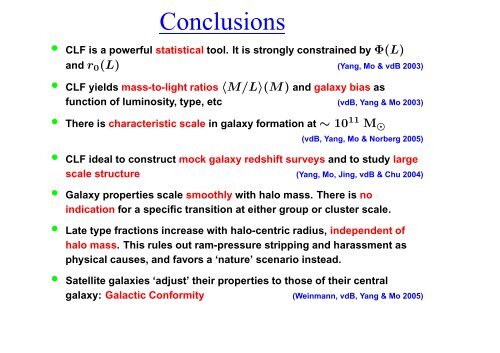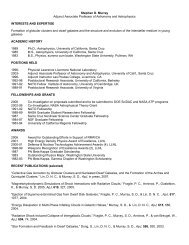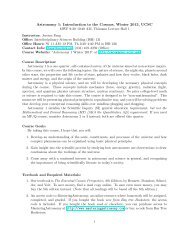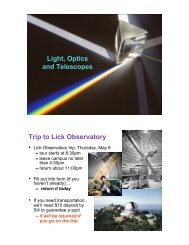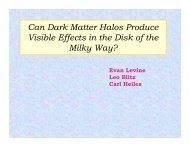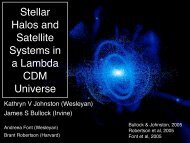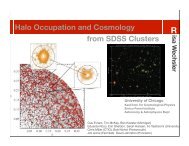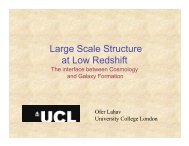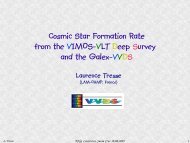Frank van den Bosch
Frank van den Bosch
Frank van den Bosch
You also want an ePaper? Increase the reach of your titles
YUMPU automatically turns print PDFs into web optimized ePapers that Google loves.
Conclusions<br />
• CLF is a powerful statistical tool. It is strongly constrained by Φ(L)<br />
and r0(L) (Yang, Mo & vdB 2003)<br />
• CLF yields mass-to-light ratios 〈M/L〉(M) and galaxy bias as<br />
function of luminosity, type, etc (vdB, Yang & Mo 2003)<br />
• There is characteristic scale in galaxy formation at ∼ 10 11 M⊙<br />
(vdB, Yang, Mo & Norberg 2005)<br />
• CLF ideal to construct mock galaxy redshift surveys and to study large<br />
scale structure (Yang, Mo, Jing, vdB & Chu 2004)<br />
• Galaxy properties scale smoothly with halo mass. There is no<br />
indication for a specific transition at either group or cluster scale.<br />
• Late type fractions increase with halo-centric radius, indepen<strong>den</strong>t of<br />
halo mass. This rules out ram-pressure stripping and harassment as<br />
physical causes, and favors a ‘nature’ scenario instead.<br />
• Satellite galaxies ‘adjust’ their properties to those of their central<br />
galaxy: Galactic Conformity (Weinmann, vdB, Yang & Mo 2005)


